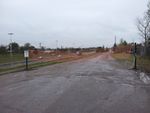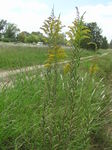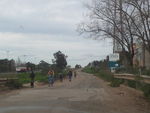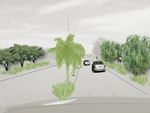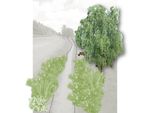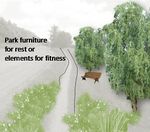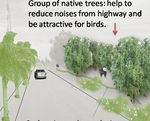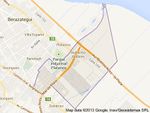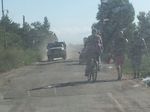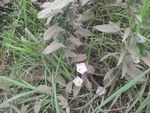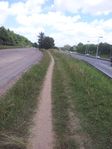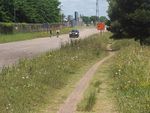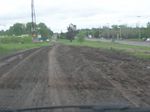Planting Design 2013 Working Group 23 - Case Study C: Difference between revisions
No edit summary |
No edit summary |
||
| (24 intermediate revisions by the same user not shown) | |||
| Line 15: | Line 15: | ||
| '''Authors''' || style="background:Lavender"|''Gisela De Santo'' | | '''Authors''' || style="background:Lavender"|''Gisela De Santo'' | ||
|- | |- | ||
| colspan="3" align="center" style="background:silver"| [[Image: | | colspan="3" align="center" style="background:silver"| [[Image: Eucaliptus en colectora - invierno.jpg|300px]] | ||
|- | |- | ||
| ||style="background:Lavender"| | | ||style="background:Lavender"| | ||
|- | |- | ||
| colspan="3" align="center" style="background:silver"| | | colspan="3" align="center" style="background:silver"| | ||
<googlemap version="0.9" lat=(-34.81417575407318) lon= (-58.180131101388554) type="satellite" zoom="14" width="300" height="250" selector="no" controls="small"> | |||
</googlemap> | |||
|} | |} | ||
| Line 42: | Line 34: | ||
New real estate developments of the last 10 years were generating population growth and needs in the area of Guillermo Hudson. This sub-urban area is 30 km from Buenos Aires City, linked by Buenos Aires-La plata highway. | New real estate developments of the last 10 years were generating population growth and needs in the area of Guillermo Hudson. This sub-urban area is 30 km from Buenos Aires City, linked by Buenos Aires-La plata highway. | ||
In particular an area (about | In particular an area (about 4 km long and 32 meters wide) has a non paved road parallel to the highway. Spontaneous flora grows due to poor maintenance. Free portions of the space have trees. Noises and pollution are important issues. | ||
It became an area for different, spontaneous and simultaneous uses without organization of space. Activities include: people performing aerobic training, walking, bicycling, coexisting with cars and cargo vehicles. The road is closed when it rains. Garbage is dumped at the site and remains there for months. | It became an area for different, spontaneous and simultaneous uses without organization of space. Activities include: people performing aerobic training, walking, bicycling, coexisting with cars and cargo vehicles. The road is closed when it rains. Garbage is dumped at the site and remains there for months. | ||
I live near here and I transit this place | I live near here and I transit this place wondering why it is not a better quality and safe place. | ||
The area has a high potential to be organized in aspects like functionality, pleasure, safeness and recovery of a natural green landscape. | The area has a high potential to be organized in aspects like functionality, pleasure, safeness and recovery of a natural green landscape. | ||
| Line 50: | Line 42: | ||
== Author's perspective == | == Author's perspective == | ||
''From which professional background/perspective are your documenting this case?'' | ''From which professional background/perspective are your documenting this case?'' | ||
I'm a passionate landscaper, interested in ecological point of view of landscapes. I'm convinced that any place can be enhanced with plants, respecting people and be sustainable also. | |||
== Landscape and/or urban context of your case == | == Landscape and/or urban context of your case == | ||
*''Biogeography, cultural features, overall character, history and dynamics'' | *''Biogeography, cultural features, overall character, history and dynamics'' | ||
* Illustration: Map; sketches; short descriptive analyses | * Illustration: Map; sketches; short descriptive analyses | ||
Guillermo Hudson was founded under that name in honour to the English naturalist who rode their pampas. It is a coastal city in Berazategui , in the south of Buenos Aires city, Argentina, on the Rio de la Plata river. | |||
It has 18 km2 long. The location is made up of about 50,000 people of various incomes and living standards. | |||
In the last 10 year, the population increased due to country clubs and gated communities built there. Those country clubs are situated on both sides of Buenos Aires La Plata highway. | |||
There are a lot of birds, insects and butterflies, some of them unique to this area. | |||
== Analytical drawings == | == Analytical drawings == | ||
| Line 63: | Line 61: | ||
<gallery caption="Analytical Drawings " widths="150px" heights="150px" perrow="4"> | <gallery caption="Analytical Drawings " widths="150px" heights="150px" perrow="4"> | ||
Image: Colectora clausurada- reduc.jpg| Raining day- road is closed | |||
Image: Colectora clausurada- reduc.jpg| Raining day- | Image: Solidago autop -4.JPG| Spontaneous herbaceous in spring- In this case solidago chilensis | ||
Image: Solidago autop -4.JPG| Spontaneous herbaceous | Image: Colectora-5.JPG | Dust reduce visibility, It is not a safe condition. Furthermore it affects plants around | ||
Image: | | Image:People_using_the_road.jpg | People going to work | ||
</gallery> | </gallery> | ||
| Line 74: | Line 72: | ||
** ''And how could it look like in 10-15 years?'' | ** ''And how could it look like in 10-15 years?'' | ||
I wish to see a different place as soon as possible. | |||
A place more enjoyable for people and safe also. Paved road is a must for people displacement going to work, training and vehicles of neighbourhood that need this road to reach highway , their homes and other places (like the office centre and also an school). | |||
Respect the footpath that people spontaneously created. It is a way to say ¨this place was designed by you also and you are part of it¨ | |||
Also it is an opportunity to revalue nice local flora using trees like Salix, Erytrina crista galli, Blepharocalyx salcifolius, Schinus Molle, Tacoma Stans, Celtis Tala, bushes like feijoa sellowiana,calliandra tweedii, herbaceus like cortadeira sellowana, salvias and palms like Syagrus romanzoffiana. Using this flora we can favour fauna: birds, insects and microorganisms that establish an ecosystem. Functional, beautiful place and ecological as well. | |||
<gallery caption="Projective Drawings " widths="150px" heights="150px" perrow="4"> | <gallery caption="Projective Drawings " widths="150px" heights="150px" perrow="4"> | ||
Image: | Image:Colectora- Hudson-Sketch-1.JPG| Create a separate space for vehicles and people | ||
Image: | Image:Colectora- Hudson-Sketch-2.JPG| Respect the footpath that people spontaneously created- revalue the local flora | ||
Image: | Image: Active place.JPG | Promote an usable place | ||
Image: | Image: Groups_of_trees.JPG | Group of native trees-Reduce noise and ecological | ||
</gallery> | </gallery> | ||
== Summary and conclusion == | == Summary and conclusion == | ||
''Please summarize your case and give arguments for your projective design (approx 150 words).'' | ''Please summarize your case and give arguments for your projective design (approx 150 words).'' | ||
Landscaping design where people and nature can live together in harmony. | |||
== Image Gallery == | == Image Gallery == | ||
| Line 89: | Line 97: | ||
<gallery caption="Image Gallery" widths="150px" heights="150px" perrow="4"> | <gallery caption="Image Gallery" widths="150px" heights="150px" perrow="4"> | ||
Image: | Image: Guillermo_Hudson_-_map.jpg | Guillermo Hudson Map location | ||
Image: | Image:Dust-vechicules-people.jpg| Cargo vehicles, particular cars and people sharing the same road | ||
Image: | Image:Dust-flora.jpg| Photosynthesis is reduced due to dust in leaves | ||
Image: | Image:Footpath-spontaneous-Highway-on-the-right.jpg |Footpath-spontaneous. Highway on the right | ||
Image:Colectora 016-R.jpg | cyclists - car - footpath - spontaneous flora | |||
Image:Mud.jpg| MUD: After rains it is very difficult to use this road and then it is closed | |||
</gallery> | </gallery> | ||
| Line 103: | Line 113: | ||
''* Please add internet links to other resources if necessary.'' | ''* Please add internet links to other resources if necessary.'' | ||
To know about local flora: | |||
http://es.wikipedia.org/wiki/Celtis_ehrenbergiana | |||
http://es.wikipedia.org/wiki/Erythrina_crista-galli | |||
http://es.wikipedia.org/wiki/Salvia_guaranitica | |||
http://www.arbolesnativos.org.ar/ | |||
Latest revision as of 23:58, 16 December 2013
---> back to group page working group 23
Please add the title of your case study here, adjust the map coordinates and replace the moa image with a characteristic image of your site
A small space to recover in Hudson
Rationale: Why is this case interesting?
Please give a short introduction to the site you have selected (not more than 150 words)
- Why did you select it?
- Is it exemplary for a specific theme or a problem?
- In how far does it relate to your life?
New real estate developments of the last 10 years were generating population growth and needs in the area of Guillermo Hudson. This sub-urban area is 30 km from Buenos Aires City, linked by Buenos Aires-La plata highway. In particular an area (about 4 km long and 32 meters wide) has a non paved road parallel to the highway. Spontaneous flora grows due to poor maintenance. Free portions of the space have trees. Noises and pollution are important issues. It became an area for different, spontaneous and simultaneous uses without organization of space. Activities include: people performing aerobic training, walking, bicycling, coexisting with cars and cargo vehicles. The road is closed when it rains. Garbage is dumped at the site and remains there for months. I live near here and I transit this place wondering why it is not a better quality and safe place. The area has a high potential to be organized in aspects like functionality, pleasure, safeness and recovery of a natural green landscape.
Author's perspective
From which professional background/perspective are your documenting this case? I'm a passionate landscaper, interested in ecological point of view of landscapes. I'm convinced that any place can be enhanced with plants, respecting people and be sustainable also.
Landscape and/or urban context of your case
- Biogeography, cultural features, overall character, history and dynamics
- Illustration: Map; sketches; short descriptive analyses
Guillermo Hudson was founded under that name in honour to the English naturalist who rode their pampas. It is a coastal city in Berazategui , in the south of Buenos Aires city, Argentina, on the Rio de la Plata river. It has 18 km2 long. The location is made up of about 50,000 people of various incomes and living standards. In the last 10 year, the population increased due to country clubs and gated communities built there. Those country clubs are situated on both sides of Buenos Aires La Plata highway. There are a lot of birds, insects and butterflies, some of them unique to this area.
Analytical drawings
Please add four analytical sketches/drawings (or montages/schemes) of your case and take the following aspects into account:
- natural dynamic versus cultural framework - in how far do these two forces come together in your case?
- dynamic through the year (you may imagine how the site looks in spring and summer, maybe you also remember it)
- highlight potentials and problems
- Analytical Drawings
Projective drawings
- Please add four projective sketches/drawings (or montages/schemes) for your case and take the following aspects into account:
- How would you like this case to change in the near future? (in 1-2 years)
- And how could it look like in 10-15 years?
I wish to see a different place as soon as possible. A place more enjoyable for people and safe also. Paved road is a must for people displacement going to work, training and vehicles of neighbourhood that need this road to reach highway , their homes and other places (like the office centre and also an school).
Respect the footpath that people spontaneously created. It is a way to say ¨this place was designed by you also and you are part of it¨
Also it is an opportunity to revalue nice local flora using trees like Salix, Erytrina crista galli, Blepharocalyx salcifolius, Schinus Molle, Tacoma Stans, Celtis Tala, bushes like feijoa sellowiana,calliandra tweedii, herbaceus like cortadeira sellowana, salvias and palms like Syagrus romanzoffiana. Using this flora we can favour fauna: birds, insects and microorganisms that establish an ecosystem. Functional, beautiful place and ecological as well.
- Projective Drawings
Summary and conclusion
Please summarize your case and give arguments for your projective design (approx 150 words).
Landscaping design where people and nature can live together in harmony.
Image Gallery
You may add a series of images/photos in addition to the sketches/drawings
- Image Gallery
References
* Please make sure that you give proper references of all external resources used.
* Do not use images of which you do not hold the copyright.
* Please add internet links to other resources if necessary.
To know about local flora:
http://es.wikipedia.org/wiki/Celtis_ehrenbergiana http://es.wikipedia.org/wiki/Erythrina_crista-galli http://es.wikipedia.org/wiki/Salvia_guaranitica http://www.arbolesnativos.org.ar/
About categories: You can add more categories with this tag: "", add your categories

